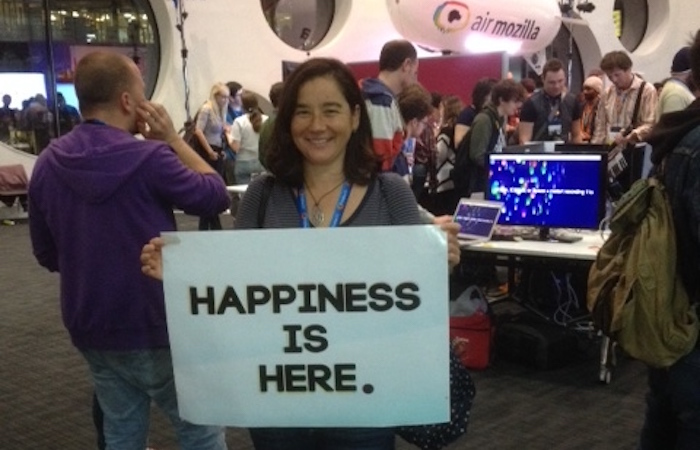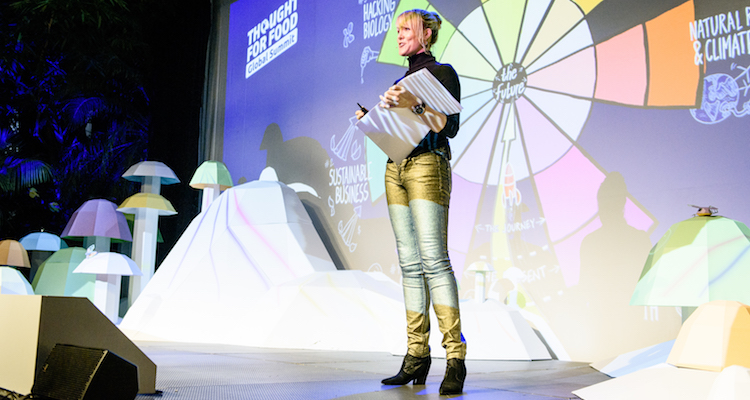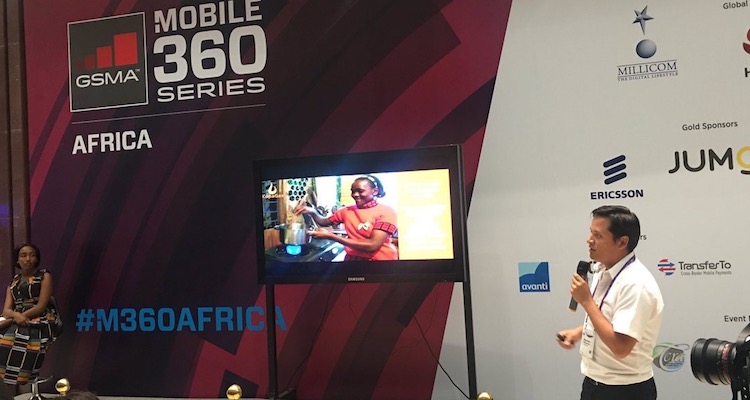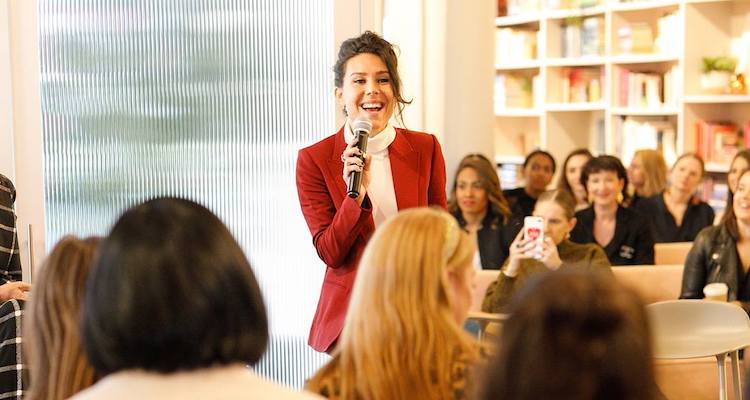Listen Now
How much time did you spend wondering about the potential quality of the last medical procedure you were involved with? More specifically, did you spend a lot of time consternating about whether or not the tools being used in the procedure (either by you or the medical professionals you were with) were reliable and safe? This is an intriguing question for many of us. For example, I was born in the United States, but I have lived outside the US for the last 11 years and I spend a good deal of my time in parts of the world that do not have running water, reliable power or iron clad hygiene practices. When I consider the question of reliability and safety while wearing each of those three hats, I come up with very different answers, as I’m willing to bet, so would many of you. This is a question that has plagued Kate Michi Ettinger since 2010, and, as our guest today for the 103rd episode of Terms of Reference, I talk with Kate about OpenQRS – an organization she founded to the issue. Kate is a social innovation consultant, product designer and health care ethicist. She is trained in law, bioethics and conflict resolution and has over fifteen years of health-related experience in private, government, academic, non-profit sectors. The “QRS” in OpenQRS, as you might guess, stands for quality, reliability and safety. As the catalyst for OpenQRS, Kate currently focuses on how to harness new technologies, such as sensors, wireless, mobile – to make it easy, effective and affordable to monitor data on quality, reliability and safety for medical devices deployed anywhere in the world. You can connect with Kate here: https://www.linkedin.com/in/ettinger https://twitter.com/k8ethics
IN TOR 103 YOU’LL LEARN ABOUT:
- Kate’s career mix of bioethics and product design.
- How the need for innovation in the development sector and low income countries make the questions about QRS all the more relevant, particularly in medicine and health care.
- The complexities of establishing and enforcing regulations across several national guidelines with varying degrees of standardization, and making the case for regulations, once again.
- What real time, automated reporting on the behavior and status of devices can do for global medical devices.
- How Kate approaches problems, partnerships and implementations; and why she chose to keep OpenQRS a nonprofit.
OUR CONVERSATION INCLUDES THE FOLLOWING:
Organizations
- Global Health and Innovation Conference (GHIC) http://www.uniteforsight.org/conference
- NeoNurture http://www.designthatmatters.org/neonurture
- OpenQRS http://www.openqrs.org
- World Health Organization (WHO)
- ETH Zurich https://www.ethz.ch/en.html
- Stanford’s d.school http://dschool.stanford.edu
- US Food and Drug Administration (FDA) http://www.fda.gov
- 2014 Tech4Dev International Conference — UNESCO Chair in Technologies for Development: What is Essential? http://cooperation.epfl.ch/2014Tech4Dev
- The “Fifth Wave” — Andrew Lyon at International Futures Forum https://www.internationalfuturesforum.com/projects.php?pid=53
- Michael Meyers at The Rockefeller Foundation https://www.rockefellerfoundation.org/people/michael-myers
- Indy Johar at Birmingham’s Impact Hub https://birmingham.impacthub.net/meet-team
Topics
- Quality, Reliability and Safety (QRS)
- Open Data
- Medical Devices
- Tests and Trials for Medical Devices
- Marketing and Commercialization of Low Cost Medical Devices
- International Guidelines, Standards and Regulations
- Medical Entrepreneurship
- Real Time, Automated Sensing, Monitoring and Reporting
- Mobile and Web Applications
- Ethics in Medical Engineering
- Patient Capital, Patient Innovation
- Impact Investing
Places
- San Francisco, CA
- Postdam
- Zurich
- Lausanne
- Scotland
- Birmingham
EPISODE CRIB NOTES
Quality, Reliability and Safety and more Kate’s background: bioethics and product design. “Two things that don’t normally go together.“ Attending a Yale Global Health and Innovation Conference, Kate sees Neonurture, an easily repairable neonatal incubator device developed at MIT, made from car parts. Kate asked, “How do we market it, make it safe, and meet regulations in the U.S. and around the world?“ Thus OpenQRS starts up. Making devices safe in places with low levels of regulation. Are devices safe for people in the developing world? Nation by nation answer. “Each country is responsible for what comes into their country.“ Rich countries have their agencies, middle-level countries have basic guidelines following their high income partners, but the low income level countries have unstable guidelines. “It’s a challenge for the entrepreneur.“ Medical devices in developing countries Multiple hurdles. A product manager had fulfilled a set of tests and trials to get into a market. The neighboring market had their own set but would not allow those made for the other market, so he had to do new ones. “He had to follow rules motivated by things other than whether the product is safe.“ WHO does have some overarching guidelines, but they are limited in reach. Also, regulating devices is more complex than pharmaceuticals. “Can we leverage technology for speedier regulation around the world?“ Do we need regulation, though? Lots of products launch without it. “You might get the success stories, not the failures.“ Kate’s goal is to comprehensively monitor devices as long as they are in use. “‘This terrible thing happened’ is a great way to get people’s attention, get money’“. Not Kate’s interest. “Helping social and health care entrepreneurs who want to build into their products something that helps them determine how to make it a better quality and safer product.“ Regulations coming after outcry tend to provide wrong responses. They might eliminate a non-existent risk for a large part of a concerned population while limiting the positive impact of a device for a smaller, more relevant group. What regulation, for whom? The challenge with a minimum-standards approach is that it focuses on the technology itself, not necessarily as the existent solution whose safety needs to be addressed while working properly. OpenQRS Upon a problem space, Kate wants to bring real time automated reporting on devices. Embedded sensors replace human reporting. This helps entrepreneurs getting objective information for innovative decision making. OpenQRS intends to be a broader solution. “We are on an early stage.“ For a mobile diagnostic help app, OpenQRS performed a series of interviews. For many kinds of resourceful medical innovations involving mobile phones, the question OpenQRS poses is “how can real time monitoring work in the situation, and how viable is the solution as a whole?“ Kate has identified a number of business models, “none of which I was interested in pursuing.“ Examples A solar powered vaccine refrigerator. Being tested with partners from over 20 countries in Africa. Ground partners requested WHO certification, which require a casing and the prototype to be sent to a place where it should keep vaccines at a controlled temperature for five days. This is not a thorough test, as this particular device would likely pass the test but it would not provide insight as to prospective failure. Kate reached out to implement real time open source thermo-sensing, that way all refrigerators help build a robust analytics data set and allows for a prompt response in specific instances of failure. Common technology companies without experience in development tend to make pricing mistakes, misjudge existing infrastructure, or outright neglect the meaning of low-cost. “It’s usually not reasonable going forward” with them. Kate’s vision is to promote the statistical data from OpenQRS as a learning tool in medical, engineering or design schools all over the world, for better local technical development and monitoring capacities for better quality and safety procedures. Day at a time People work with Kate after having a conversation with her, as in India’s Health 2.0 Conference. Walter Carlin, Kate’s first collaborator, met her at a Festival at Potsdam’s D-School (Stanford). He now leads a lab at ETH Zurich. Reactions to ethics-embedded medical devices “It depends on the constituency.” There are a lot of different groups of people. People investing in medical ventures in low income countries: “We had never thought of that.“ Others admit it’s a problem but are not willing to invest further on it: “We will add it later on when we know it will work.“ Others say, “We know this is a problem and we fund our medical device ventures to go through the FDA process even though they are not for the U.S.” A spectrum. On the entrepreneurial side, they are more open to consider the problem, reach out to Open QRS. “I have never found the mindset that ‘if it’s not required,’ I’m not concerned about safety“ Funders learnings After all this time Kate is over the “Prototype Stage” and has a body of knowledge she uses for new projects. Those include opportunities, layers and roadmaps the designer can decide to incorporate or follow through. Kate insists in letting the outcomes of the project be open and useful for the next round of inventors, to avoid redundancies, as well as raise awareness and profiles. How to do that? When it comes to global health technology, “It a 2-3 tier system.” Kate would like to be the one where people make the decisions about the device to use. Market space positioning motions ’14 at Unesco Essential Technologies Conference. Kate and Walter present their initial work and the proposal for OpenQRS. Multi-stakeholder event. At the end arose the general realization of regulation as a major hurdle. “There is a timeliness.” Back in 2010 Kate knew it was important but early to have a conversation. Eventually “failures would start to surface, and money would show up.“ There was also the “copy the U.S.” phase. Kate does not see OpenQRS as a business. It needs to be a nonprofit, collaborative effort. Patient Capital: historical recap “Patient innovation.“ A deep commitment for everyone everywhere to trust medical devices. “How can we do that meaningfully?” How to empower patients and practitioners? How to harness new technologies? How to make information accessible to people? At the dawn of web, Kate’s startup imploded. Afterwards she took another hard look at the market. Her team saw adherence to medication as a pain point. A game, coaching model developed, with some reservations about privacy and “X return.” There would not be “impact investment” for a couple of years. Investors eventually appeared, as did mobile. At a Conflict Resolution Conference, Kate saw a speaker request the participants to consider the violence issue in generations forward. “The impatient part of me cannot understand why those things keep happening.“ Becoming a leader in low cost medical devices tends not to enjoy viral growth. Regulations and context play a large role in the space. “Frugal innovation,” “Open hardware,” “3D printing of medical devices.” Keeping track of experiences is crucial. It’s Kate’s goal in life Open emphasis in a proprietary world General safety is easier when data is accessible, easy and affordable. Some devices belong to a proprietary paradigm, for which Kate asks: “Are you willing to leave your data mining open?“ Currently testing models, like the owner having early access to data or stimulus for using feedback timely. Real time monitoring “is just starting,” but it’s already open. In IT, there are instances of private companies developing open standards, such as Apache (or Java). Plugs Andrew Wein (mentor) International Futures Forum Scotland’s “Fifth Wave” of Public Health: Diversity. Ecosystem, system’s level approach. Michael Meyers, Rockefeller Foundation. Indy Johar Birmingham. Lower classes in developed countries, beyond the Millennium Goals. Cross-sector, multi sector partnerships.Please share, participate and leave feedback below!
If you have any feedback you’d like to share for me or Kate, please leave your thoughts in the comment section below! I read all of them and will definitely take part in the conversation. If you have any questions you’d like to ask me directly, head on over to the Ask Stephen section. Don’t be shy! Every question is important and I answer every single one. And, if you truly enjoyed this episode and want to make sure others know about it, please share it now:[feather_share show=”facebook, twitter, linkedin, google_plus” hide=”reddit, pinterest, tumblr, mail”]
Also, ratings and reviews on iTunes are very helpful. Please take a moment to leave an honest review for The TOR Podcast!




